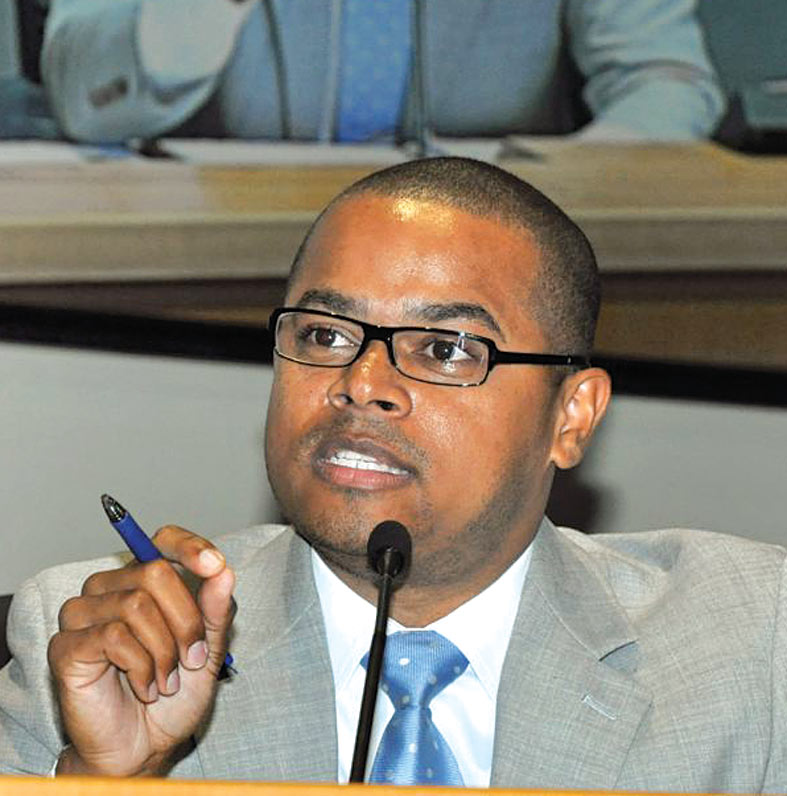Push seeks more local jobs on city contracts

Miami commissioners are considering legislation to help ensure that local people are hired for public projects, and perhaps make a dent in the city’s poverty level.
“We have a chance to touch poverty in different ways,” said Commissioner Keon Hardemon, whose constituency includes some of the city’s poorest neighborhoods. He pushed for even higher percentages in the proposal.
Commissioners recently approved the first reading of proposed local workforce participation requirements. They’re included in an amendment to the city’s procurement ordinance, which governs contracts for public works or improvements.
At a commission meeting in May, concerns were raised during the presentation of the African Square Park Improvements and Renovations/ Splash Park Project regarding the local workforce participation requirements for public works and construction projects.
The discussion led to suggested changes raising the local workforce participation percentage requirement, and requiring that 50% of the local workforce percentage be from within the district where the project is located. The city is divided into five districts.
After extensive market research of similar-sized government agencies and their local workforce participation requirements, according to city staff, a draft amendment was prepared to reflect a percentage scale ranging from 10% to 20% local workforce participation based on the construction cost of the project.
In addition, language was added to address an “aspirational” requirement that the contractor strive to employ a minimum of 50% of the minimum local workforce participation percentage from within the district where the project sits.
Mr. Hardemon, vice chair of the commission and serving in his first term, has championed several efforts to hire locally and make an impact in neighborhoods needing an economic boost.
He urged colleagues to consider a “friendly amendment” to the proposal, and suggested beefing up the percentages. In doing so, the commission can help the community – particularly those in heavily impoverished areas, he said.
The proposed changes will help city leaders reduce poverty and not just be “words on paper,” said Mr. Hardemon.
The proposed amendment spells out the minimum percentage requirements for on-site labor from persons residing within the city.
City construction contracts with a construction cost of more than $250,000 but less than $500,000 would require a minimum local workforce participation of 10%.
Contracts with a construction cost of more than $500,000 but less than $750,000 would require a minimum local workforce participation of 12.5%, under the original draft. Mr. Hardemon moved to increase the requirement to 15%.
Contracts with a construction cost of more than $750,000 but less than $1 million would require a minimum local workforce participation of 15%, under the original draft. Mr. Hardemon moved to increase the requirement to 20%.
Contracts with a construction cost of more than $1 million but less than $4 million would require a minimum local workforce participation of 20%, under the original draft. Mr. Hardemon moved to increase the requirement to 40%.
Mr. Hardemon also suggested a requirement that any company submitting a proposal for construction projects make available its history of participation in local workforce participation requirements on past projects. He suggested asking whether they met the percentages and by how much.
Mark Spanioli, director of the Capital Improvements and Transportation Program, said it might be possible to include the past performance of contractors on the cover sheet of a request for proposals.
He noted that the ordinance includes penalties for contractors that fail to meet local workforce requirements.
Mr. Spanioli cautioned against setting the bar too high for more costly projects, stating that a requirement of 40% local workforce would require “a tremendous workforce” from within the city boundaries, a number that might not be realistic.
Mr. Hardemon then suggested the 40% requirement include language that would allow hiring from all of Miami-Dade County rather than limit it to the city.
Fellow commissioners Marc Sarnoff and Wifredo “Willy” Gort agreed with Mr. Hardemon’s suggested changes to the amendment. Commissioners Frank Carollo and Francis Suarez were absent for the vote.
The proposal is to have a second and final reading later.







Recent Comments